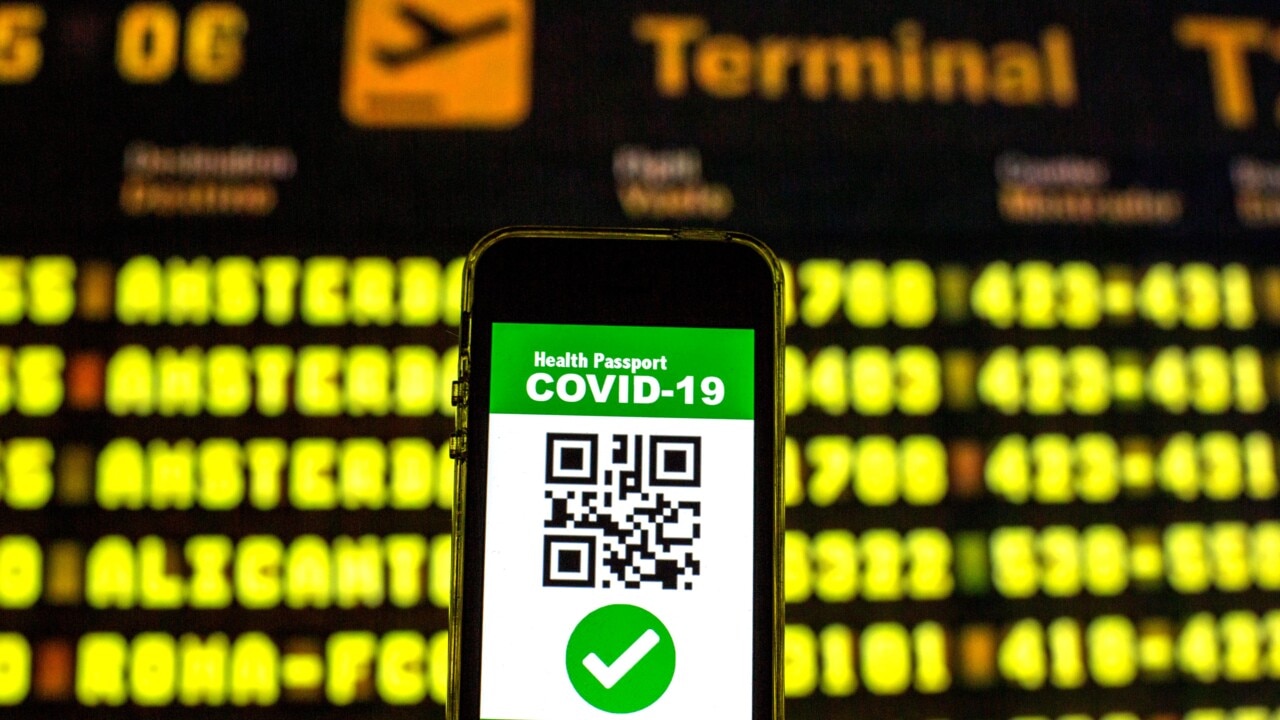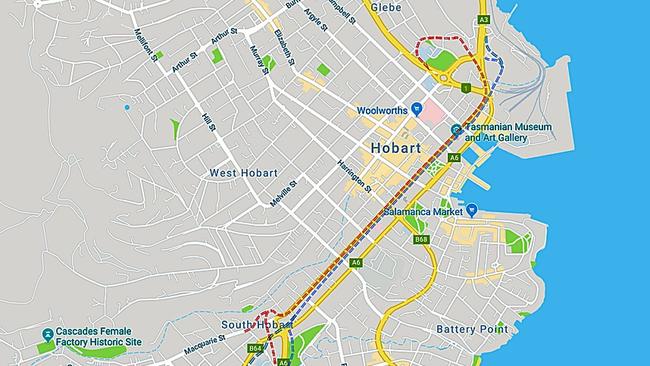Calls to dig deeper to solve Hobart’s traffic woes
A world tunnel expert living in Hobart believes going underground will solve the city’s traffic congestion.

Opinion
Don't miss out on the headlines from Opinion. Followed categories will be added to My News.
THE residents of Dynnyrne that are being subjected to the possibility that their homes may be razed to accommodate an additional traffic lane on the city-bound direction of the Southern Outlet must be perplexed at the obtuse decision-making process developed by the supporting government officials.
Just a few moments of clear thought applied to this concept will reveal that the traffic will arrive at the Davey Street intersection more quickly than previously, only to be stalled by the salient prevailing traffic flow in Macquarie Street.
There have been many and varied opinions proposed by various personnel suggesting a tunnel(s) or overpass(s) be constructed to avoid the CBD, but have these alternatives been diligently evaluated?
The problems with any overpass are that during the construction phase there will be significant disruption to traffic and pedestrian access, and the resulting structure will produce a visual blot on the landscape coupled with continual traffic noise emanating from the elevated roadway.

I am not a traffic engineer and consequently the following two solutions may be denounced, but logic decrees that if you can travel across the city without the impediment of any traffic signals, the journey time will be improved from the current multiple interruptions experienced while transiting Davey or Macquarie Streets.
I am suggesting one dual carriage tunnel, located below the alignment of Macquarie Street, but two alternative methods of construction.
The distance from the Southern Outlet intersection with Macquarie Street to the southern end of the Brooker Highway is approximately 2100 metres. If a bypass tunnel were constructed to parallel this route, it would only require two minutes and six seconds at 60 Km per hour to travel across the city.
This is substantially better than the 10 to 15 minutes duration that transit of this route in current peak hour demands. The caveat here is that at the exit points, well-engineered merging lanes are constructed. The route of the concept is illustrated below.
(Red shows north-eastbound traffic blue shows south-westbound traffic)
Most tunnels constructed usually require an easement (right of way) at the surface above the alignment of the tunnel. For this reason, it would be prudent not to “compulsorily” acquire private properties above any tunnel alignment, but to attempt to place its location parallel to, and below existing roadways and public land.

Most Hobartians will recollect that during MOFO a couple of years ago, an “artist” was buried adjacent to the town hall inside a container. This indicates that the first few meters of geological material under Macquarie Street can be excavated by conventional and readily available machinery.
Obviously, the length of the tunnel should be investigated to establish if these conditions prevail for the entire route under consideration. Without a long description of the necessary procedures required for the construction of a near surface tunnel, just accept that it would be possible. The tunnel “roof” would be a reinforced concrete deck, laid at the current surface of
Macquarie Street, using half the available street width while simultaneously diverting the traffic to the opposite half (Parking would have to be removed during this period of construction). The concept of near-surface tunnel is shown in the following illustration.
The advantage of this concept of construction is that excavation equipment could be mobilised with almost no delay, the majority of which is already available within Tasmania, and local contractors are adept at surface excavation and then the burying of pipelines for example. The disadvantages, however, are due to the plethora of sewer, water, telecommunication, electrical-power and other services that I suspect cross Macquarie Street near the surface, the tunnelling process although possible would be tediously slow to enable the detection, then re-routing of these services above or below any intended tunnel. There would be traffic disruptions at any intersections that the public may or may not accept as the price of “progress”.
Notwithstanding the pros and cons, this method was adopted for the 1.7 km long tunnel section of the Graham Farmer freeway in Perth WA that was completed in 2000.
A second alternative is to excavate a tunnel well below the level of any of the services. I would anticipate that as depth increases, the ground would be less weathered (more difficult to excavate due to no cracks fissures, layers, or fine gravels), plus there would be the increasing potential of water. However, a modern tunnel boring machine could be purchased, and it could withstand the water pressure, it would be able to crush the geology to be encountered and simultaneously erect a precast concrete lining as it progresses.

Unfortunately, there are no Australian manufacturers at present capable of producing a machine of this type locally. The advantage of this solution is there would be very little disruption to the public’s everyday life at the surface. Due to the current rate of progress at the Macquarie Point redevelopment, that area could be used by the construction contractor for the staging area for the tunnelling machine as well as the treatment plant for the excavated material and its subsequent transport to a disposal area.
(Is anybody searching for clean uniform coarse gravel fill? What about a new causeway at either Bridgewater or Midway Point?)
The disadvantages of this system are that the machine would have to be produced overseas, the skilled operational personnel generally will have to come from interstate or internationally, the time to design, manufacture and deliver such a machine will require well over a year, and the diameter of the tunnel will result in the traffic lanes being limited to two (one eastbound and one westbound) or possibly three lanes. This is a restriction resulting from the diameter of the tunnelling machine.
Either of the suggested concepts described here will be expensive, but the result will provide a viable solution to the traffic flow along Macquarie and Davey Streets. Tunnels are an investment, not a cost.
The addition of a traffic lane accomplished by sequestering private properties in Dynnyrne will be less expensive but not achieve anything other than enabling the Northbound traffic from Kingston to arrive at the traffic jam sooner.
Tony Peach
The writer is a retired engineer who has been involved in the design and manufacture of tunnel boring machines both in Australia and internationally since being introduced to them with the “Hydro’s Mole” in the 1960s.
In 2021 a chapter of the Institute of Engineers of Australia, the”Australian Tunnelling Society” elected to bestow their Allen Neyland award on Tony. This honour is presented triennially to the person the committee considers has “provided outstanding achievement associated with tunnelling and underground excavation and construction in Australia”.



